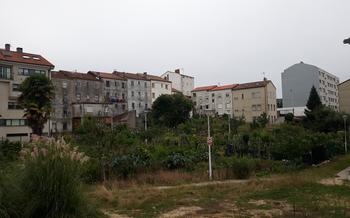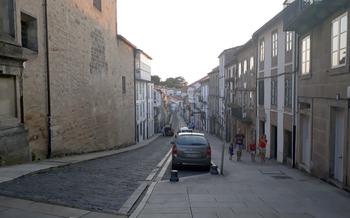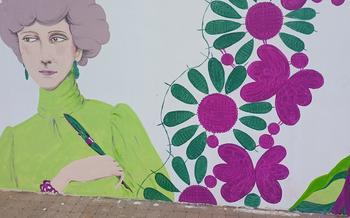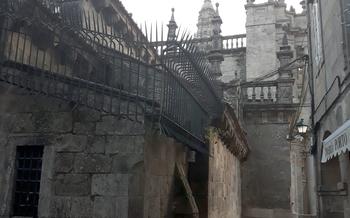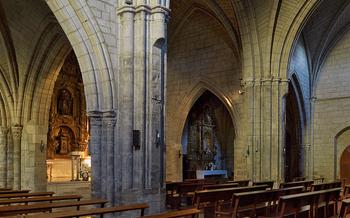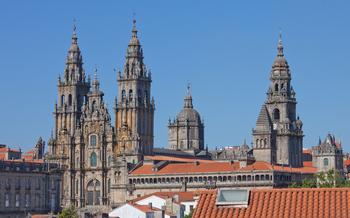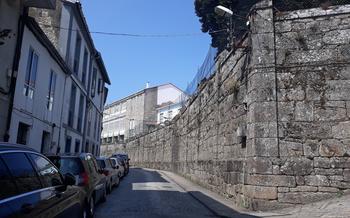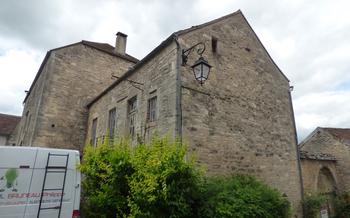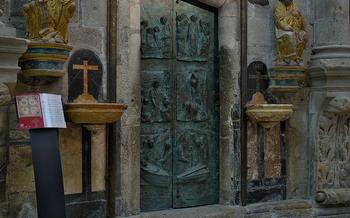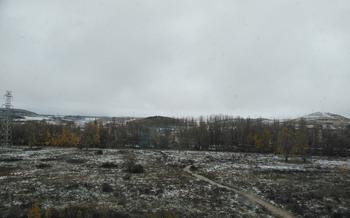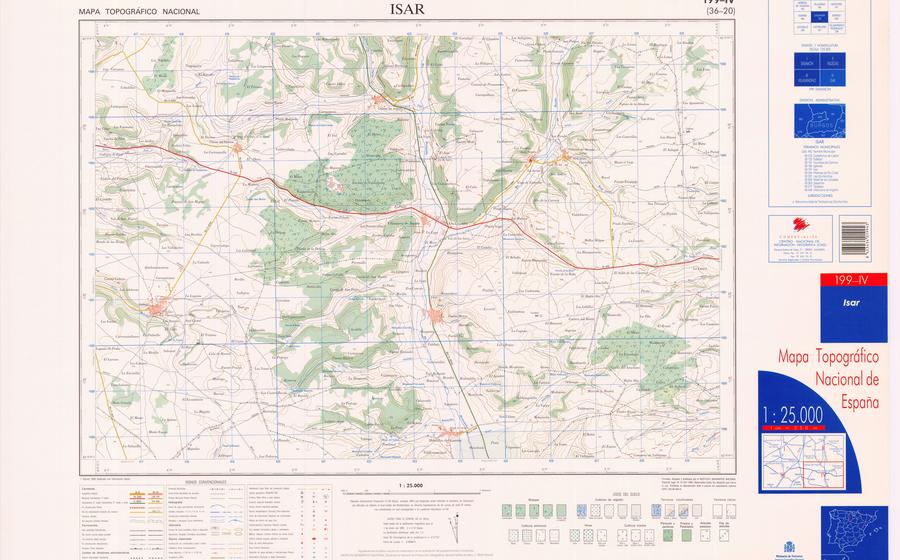
Hornillos del Camino
- Location and Accessibility of Hornillos del Camino
- Pilgrimage Experience at the Albergue de Hornillos
- Culinary Delights of Hornillos del Camino
- Practical Tips for Vegetarians and Vegans
- Discovering the Enchanting Hermitage of San Felices
- Strolling Along the Camino de Santiago Route
- Exploring the Natural Beauty of Hornillos del Camino
- Uncovering the Secrets of the Casa del Indiano
- Shopping for Local Crafts and Souvenirs
- Participating in Local Festivals and Events
- Local Legends and Folklore
- Connecting with the Local Community
- Capturing the Essence of Hornillos del Camino Through Photography
- Insider Tip: Discovering Hidden Gems Off the Beaten Path
Location and Accessibility of Hornillos del Camino
Hornillos del Camino, a picturesque village nestled in the heart of the Burgos province in Spain, is a captivating destination that attracts visitors from near and far. Located along the historic Camino de Santiago pilgrimage route, Hornillos del Camino offers a unique blend of history, culture, and natural beauty. The village is easily accessible by road, with well-maintained highways connecting it to major cities and towns in the region. The nearest airport is Burgos Airport, approximately 45 kilometers away, providing convenient access for international travelers.
The village's strategic location along the Camino de Santiago has played a significant role in shaping its character and identity. Hornillos del Camino has long been a welcoming haven for pilgrims, offering them a place to rest, seek sustenance, and find spiritual renewal as they journey along the ancient pilgrimage route. The village's rich history and cultural heritage are deeply intertwined with the Camino, and visitors can still experience the vibrant spirit of pilgrimage that permeates the village's atmosphere.
Pilgrimage Experience at the Albergue de Hornillos
Nestled in the heart of Hornillos del Camino, the Albergue de Hornillos offers pilgrims a warm and welcoming haven along the Camino de Santiago pilgrimage route. This historic albergue has been providing shelter and assistance to weary travelers for centuries, playing a vital role in the spiritual and cultural heritage of the region.
As you step through the doors of the albergue, you will be greeted by a sense of tranquility and camaraderie. The albergue's friendly staff is dedicated to ensuring that pilgrims have a comfortable and enjoyable stay, providing guidance, advice, and a listening ear to those in need.
The albergue offers a range of facilities and services to cater to the needs of pilgrims. Pilgrims can choose from a variety of accommodation options, including dormitory-style rooms and private rooms. The albergue also has a fully equipped kitchen, where pilgrims can prepare their own meals or share a communal meal with fellow travelers.
One of the highlights of staying at the albergue is the opportunity to connect with other pilgrims from all walks of life. The albergue fosters a sense of community and camaraderie, where pilgrims can share stories, experiences, and insights as they journey along the Camino.
To book a stay at the Albergue de Hornillos, pilgrims can contact the albergue directly by phone or email. It is advisable to make reservations in advance, especially during the peak pilgrimage season, to secure a place to rest and recharge before continuing their journey along the Camino de Santiago.
Culinary Delights of Hornillos del Camino
Hornillos del Camino offers a tantalizing array of local specialties and traditional dishes that will delight your palate. Immerse yourself in the culinary traditions of the region by trying the mouthwatering cocido castellano, a hearty stew made with chickpeas, meat, and vegetables. Don't miss the opportunity to savor the flavors of lechazo asado, a succulent roasted lamb dish that is a local favorite. For a taste of the sea, try the trucha a la plancha, a grilled trout that showcases the region's fresh catch.
To experience the authentic flavors of Hornillos del Camino, head to one of the local restaurants or eateries. El Mesón de la Villa is a popular choice, renowned for its traditional Spanish cuisine and warm hospitality. For a more intimate dining experience, try La Taberna del Camino, which offers a cozy atmosphere and a menu filled with local specialties.
Supporting local businesses is essential for preserving the culinary traditions of Hornillos del Camino. By dining at local restaurants and purchasing products from local markets, you contribute to the sustainability and vitality of the community.
For those with dietary restrictions, vegetarian and vegan options are available at several establishments in Hornillos del Camino. Ask your server for recommendations or look for restaurants that cater specifically to plant-based diets.
Practical Tips for Vegetarians and Vegans
- Ask about ingredients: Many dishes that appear to be vegetarian or vegan may contain hidden animal products, such as lard or gelatin. Don't hesitate to ask your server about the ingredients used in each dish.
- Explore local markets: Local markets are a great place to find fresh fruits, vegetables, and other plant-based ingredients. You can also find local specialties, such as vegan cheeses and meat substitutes.
- Look for vegetarian and vegan restaurants: There are a few vegetarian and vegan restaurants in Hornillos del Camino. These restaurants offer a variety of dishes that cater specifically to plant-based diets.
- Cook your own meals: If you have access to a kitchen, you can cook your own meals using fresh, local ingredients. This is a great way to save money and ensure that your food is prepared according to your dietary preferences.
Discovering the Enchanting Hermitage of San Felices
Nestled amidst the rolling hills surrounding Hornillos del Camino lies the enchanting Hermitage of San Felices, a hidden gem steeped in history and religious significance. This 12th-century hermitage stands as a testament to the village's deep-rooted spiritual heritage and offers visitors a glimpse into the region's rich past.
The hermitage's unassuming exterior belies the architectural treasures within. Its Romanesque style features include a sturdy bell tower and intricate carvings that adorn the entrance. Inside, visitors are greeted by a serene atmosphere and a beautifully preserved interior that has remained largely untouched over the centuries.
The highlight of the hermitage is its stunning altarpiece, a masterpiece of medieval craftsmanship. The intricate carvings depict scenes from the life of Christ and the saints, showcasing the exceptional artistry and devotion of the era. The altarpiece is a testament to the enduring power of faith and the enduring legacy of the Hermitage of San Felices.
Beyond its religious significance, the hermitage holds a special place in the hearts of the local community. It is a place of pilgrimage and devotion, where locals gather for religious festivals and celebrations throughout the year. The annual feast day of San Felices, held in July, draws visitors from near and far, who come to pay homage to the saint and partake in the lively festivities.
For those seeking tranquility and a deeper connection with the past, the Hermitage of San Felices offers a unique and immersive experience. Visitors can explore its sacred spaces, admire its artistic treasures, and soak in the serene atmosphere that has enveloped this special place for centuries.
Strolling Along the Camino de Santiago Route
Hornillos del Camino is a popular stopover for pilgrims walking the Camino de Santiago, an ancient pilgrimage route that stretches across Europe to the Cathedral of Santiago de Compostela in northwestern Spain. The village offers a range of accommodation and services to cater to the needs of pilgrims, and its location on the Camino makes it an ideal place to rest and prepare for the next leg of the journey.
As you walk the Camino through Hornillos del Camino, take time to appreciate the scenic views and landmarks that line the route. The village is surrounded by rolling hills, vineyards, and olive groves, and the path offers stunning vistas of the surrounding countryside. Keep an eye out for historical markers and monuments along the way, which provide insights into the history and culture of the region.
For pilgrims walking the Camino, Hornillos del Camino is more than just a stopover. It is an opportunity to connect with fellow pilgrims, share stories, and experience the camaraderie that is unique to this ancient pilgrimage route. Whether you are a seasoned pilgrim or a first-time walker, Hornillos del Camino offers a warm welcome and a chance to embrace the spirit of the Camino.
Practical tips for pilgrims walking the Camino:
- Pack light: Carrying a heavy backpack can be tiring, so pack only essential items.
- Wear comfortable shoes: You will be doing a lot of walking, so make sure your shoes are comfortable and supportive.
- Bring a water bottle and snacks: Stay hydrated and energized by bringing along a water bottle and some snacks to refuel during your walk.
- Be prepared for all weather conditions: The weather in Spain can be unpredictable, so be sure to pack layers of clothing and a raincoat.
- Respect local customs and traditions: Be mindful of local customs and traditions, and behave respectfully towards the people and places you encounter along the way.
Exploring the Natural Beauty of Hornillos del Camino
Hornillos del Camino is not just a historic village but also a gateway to stunning natural landscapes. The village is surrounded by rolling hills, lush forests, and meandering rivers, offering a variety of hiking trails and scenic walks for outdoor enthusiasts.
One of the most popular hiking trails is the Camino de Santiago, which passes through Hornillos del Camino. Pilgrims walking the Camino can enjoy breathtaking views of the surrounding countryside, as well as the opportunity to explore the village's rich history and culture.
For those looking for a more challenging hike, there are several trails that lead into the nearby mountains. These trails offer stunning panoramic views and the chance to spot local wildlife, such as deer, wild boar, and birds of prey.
In addition to hiking, visitors can also enjoy nature walks along the banks of the nearby Arlanzón River. The river is home to a variety of aquatic plants and animals, and its banks are lined with trees and shrubs, providing a shady and peaceful retreat from the summer heat.
Whether you're an experienced hiker or simply looking for a leisurely stroll, Hornillos del Camino has something to offer everyone. Be sure to pack your hiking boots and camera, and get ready to explore the natural beauty of this charming village.
Uncovering the Secrets of the Casa del Indiano
Among the many architectural wonders of Hornillos del Camino, the Casa del Indiano stands out for its grandeur and historical significance. Built in the early 20th century by a wealthy merchant who returned from the Americas, the house is a testament to the prosperity and influence of the Indiano community in the region.
The Casa del Indiano is a stunning example of eclectic architecture, blending elements of Spanish colonial style with traditional European influences. Its imposing facade, adorned with intricate carvings and colorful tiles, reflects the opulence and sophistication of its original owner. Inside, the house boasts spacious rooms with high ceilings, ornate chandeliers, and beautifully preserved frescoes.
Today, the Casa del Indiano has been transformed into a cultural center, hosting exhibitions, concerts, and other events that celebrate the rich history and heritage of Hornillos del Camino. Visitors can explore the house's many rooms, each of which tells a story of the lives and times of the Indiano families who once resided here.
Practical Information:
- Opening hours: Tuesday to Sunday, 10 am to 6 pm.
- Admission fees: General admission - €5, Concessions - €
- Guided tours are available in Spanish and English upon request.
- The Casa del Indiano is wheelchair accessible.
Shopping for Local Crafts and Souvenirs
Hornillos del Camino is a treasure trove of unique crafts and souvenirs that reflect the village's rich history and culture. Visitors can find an array of traditional items, including handmade ceramics, intricate textiles, and locally produced wines.
The village market, held every Sunday in the central square, is a vibrant hub of activity where artisans and vendors showcase their wares. Here, you can browse through colorful stalls and discover one-of-a-kind souvenirs, such as hand-painted pottery, finely woven rugs, and artisanal jewelry.
For those seeking a more curated shopping experience, there are several boutiques and specialty shops throughout the village. These charming establishments offer a range of unique items, including locally made leather goods, hand-crafted wooden sculptures, and traditional Spanish clothing.
When shopping in Hornillos del Camino, it's important to remember that bargaining is not only acceptable but expected. Engaging in friendly negotiations with vendors is part of the local culture and can result in great deals.
To fully immerse yourself in the village's artistic traditions, consider visiting local workshops and studios. Here, you can watch skilled artisans at work and gain insights into the creative processes behind their beautiful creations.
By supporting local artisans and businesses, you not only take home unique souvenirs but also contribute to the preservation of Hornillos del Camino's rich cultural heritage.
Participating in Local Festivals and Events
Hornillos del Camino comes alive during its numerous festivals and events, offering a vibrant immersion into the local culture.
The most notable festival is the Fiesta de San Nicolas de Bari, held in September in honor of the village's patron saint. The streets are adorned with colorful decorations, and the air is filled with music, dancing, and laughter. Locals and visitors alike gather to celebrate with processions, bullfights, and traditional games.
Another highlight is the Semana Santa (Holy Week) processions, which showcase elaborate floats and religious imagery. The village's streets are transformed into a sacred theater, with locals dressed in traditional costumes and enacting the story of Christ's passion and resurrection.
Throughout the year, Hornillos del Camino hosts various cultural events, such as art exhibitions, concerts, and theater performances. These events showcase the work of local artists and provide a platform for cultural exchange.
By participating in local festivals and events, visitors can immerse themselves in the vibrant traditions and customs of Hornillos del Camino and make their journey truly memorable.
Local Legends and Folklore
Hornillos del Camino is steeped in a rich tapestry of legends and folklore that have been passed down through generations. One popular tale involves a mysterious figure known as the "Dama Blanca" (White Lady). Legend has it that she appears as a ghostly apparition, guiding lost pilgrims along the Camino de Santiago. Locals believe that encountering the Dama Blanca brings good fortune and protection during the pilgrimage.
Another legend tells the story of a hidden treasure buried beneath the ruins of an ancient castle near Hornillos del Camino. It is said that the treasure was left behind by a wealthy Moorish king who fled the village during the Reconquista. Many have searched for the treasure over the years, but none have succeeded. The legend of the hidden treasure continues to captivate the imaginations of locals and visitors alike.
To delve deeper into the local folklore, visitors can attend storytelling sessions or guided tours that explore the myths and legends of Hornillos del Camino. These sessions provide a unique opportunity to learn about the village's rich cultural heritage and the stories that have shaped its identity.
Connecting with the Local Community
Hornillos del Camino is a village that has retained its traditional charm and strong sense of community. Interacting with the locals is a rewarding experience that will provide you with a deeper understanding of their way of life. Here are some tips for connecting with the local community:
-
Visit the local bars and restaurants. These establishments are popular gathering places for locals, especially in the evenings. Strike up a conversation with the bartenders, waiters, or other patrons to learn about their daily lives and experiences.
-
Attend local events and festivals. Hornillos del Camino hosts several annual events and festivals that celebrate the village's culture and traditions. These events provide an excellent opportunity to meet locals and participate in traditional activities.
-
Volunteer your time. There are several opportunities to volunteer in Hornillos del Camino, such as working with local organizations or helping out at community events. Volunteering is a great way to give back to the community and meet new people.
-
Learn a few words of Spanish. While many locals in Hornillos del Camino speak English, making an effort to learn a few basic Spanish phrases will show your respect for their culture and make it easier to communicate with them.
-
Be respectful of local customs and traditions. It is important to be mindful of local customs and traditions when interacting with the people of Hornillos del Camino. This includes respecting their personal space, avoiding loud noises, and dressing appropriately.
Capturing the Essence of Hornillos del Camino Through Photography
Hornillos del Camino, with its picturesque landscapes, charming architecture, and vibrant culture, offers a wealth of opportunities for photography enthusiasts. Whether you're an amateur photographer looking to capture your travel memories or a professional seeking unique shots, Hornillos del Camino has something to offer.
Tips for Stunning Photographs:
-
Early Morning Light: The golden hues of the early morning light create a magical atmosphere. Capture the village bathed in this warm glow, especially during sunrise.
-
Composition: Play with different angles and perspectives to create dynamic compositions. Experiment with leading lines, such as the winding streets or the stone walls, to draw the viewer's eye.
-
Details: Don't overlook the small details that add character to Hornillos del Camino. From intricate carvings on buildings to colorful flowers adorning windowsills, these details can make for compelling photographs.
-
Local Life: Capture the essence of the village by photographing its people going about their daily lives. Markets, festivals, and local gatherings offer excellent opportunities to capture candid moments.
Best Locations for Photography:
-
Church of San Nicolas de Bari: The church's stunning architecture and intricate details make it a photographer's paradise. Don't miss the opportunity to capture its grandeur from different angles.
-
Scenic Views: Hornillos del Camino is surrounded by rolling hills and lush greenery. Head to the outskirts of the village to capture panoramic views of the countryside.
-
Pilgrims on the Camino: The village is a popular stopover for pilgrims walking the Camino de Santiago. Photograph their journey as they pass through Hornillos del Camino, capturing the spirit of this ancient pilgrimage route.
Practical Information:
-
Photography Permits: No special permits are required for photography in Hornillos del Camino. However, it's always respectful to ask for permission before photographing people or private property.
-
Photo Tours and Workshops: Local photography enthusiasts offer guided photo tours and workshops, providing insights into the best spots for capturing the village's essence.
-
Equipment: Bring a versatile camera with a wide-angle lens to capture both landscapes and close-ups. A tripod can be useful for low-light photography and long exposures.
Insider Tip: Discovering Hidden Gems Off the Beaten Path
Venture beyond the main tourist trail to discover the hidden gems of Hornillos del Camino. Explore the tranquil riverside paths, where you can spot native birds and wildflowers. Visit the nearby village of Quintanilla de Vivar, known for its ancient Roman ruins and charming medieval streets. Immerse yourself in nature by hiking to the Mirador del Cerrato, offering breathtaking panoramic views of the surrounding countryside. For a unique experience, join a local cooking class and learn to prepare traditional Spanish dishes using fresh, local ingredients. Discover the secrets of Hornillos del Camino like a true insider by exploring these hidden treasures.
